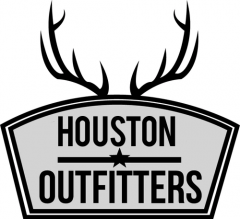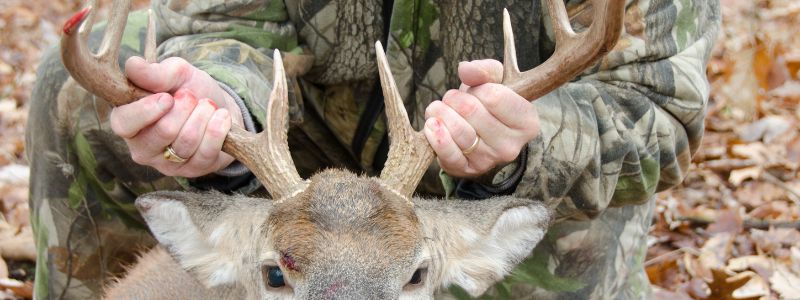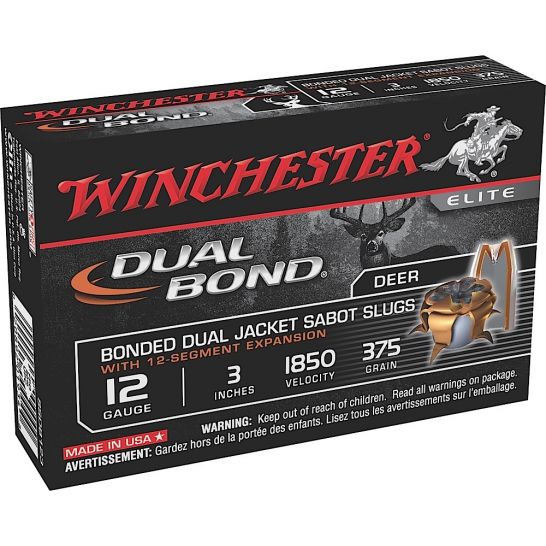The afternoon of Thanksgiving Day, was a perfect day for hunting. The temperature was in the upper forties with a light breeze blowing and overcast. I was hunting atop a hill over looking an old creek bottom. The bottom had been recently cleared by a logging company, which made the hill an excellent spot to hunt deer. I was hunting with a Desert Eagle-“Lone Eagle” chambered in 7mm-08, using Remington factory ammunition with 140-grain core-loct bullets.
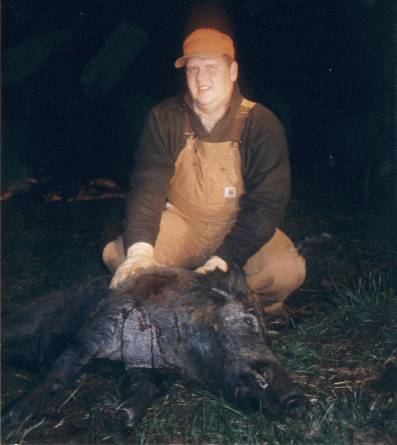
Just before dark I noticed a large animal moving through the goat weeds close to the creek. It was a large black wild boar. He moved through too quickly so I didn’t get a shot. Later I could hear him rooting around, to my right, at the bottom of the hill. The thick under brush and fallen trees blocked my view. So I decided to put the stalk on him. I made my way down the hill to the logging road, where I could move quickly and quietly. As I walked along the road I saw him, and I guess he heard me. So I wasn’t quiet enough. He bolted forward into a horseshoe created by the creek. I hurried after him being as quiet as possible. I reached an opening though a small bunch of trees where I spotted him. He was walking along the edge of the creek. I raised my gun, leveled the crosshairs and fired. Missing him! As the large hog whirled around, I reloaded. He rushed past about twenty-five yards away. I fired again. Hitting him square in the shoulder. He turned hard, heading strait at me. I ducked behind a few saplings, digging in my pocket like Barney Fife for another round. When he reached the roadway, he was only a few feet away and I saw just how big he was, six feet plus in length and over three feet at the shoulder. Thinking he was solidly hit I watched him jump (yes I said jump) over the fence and disappear into the woods. My hunting partner and I tracked him until we lost the blood trail. He was never found. This haunted me for a very long time.
Now we’ve all heard stories of the giant hog, deer, or other game that got away. When this happened it really got me to thinking about this issue. Why is a hog so much tougher than a deer? We, as ethical hunters, should do what we can to ensure quick clean kills on all animals we take. So I did a little research on the differences between hogs and deer. As it turns out a hog and a deer are very different animals when it comes to their anatomy. Deer are on the light end, hogs on the heavy end of the scale. With the hogs range seemingly growing by the day and since I enjoy hunting and eating them, I made a few changes in my guns and loads. To be better prepared the next time out.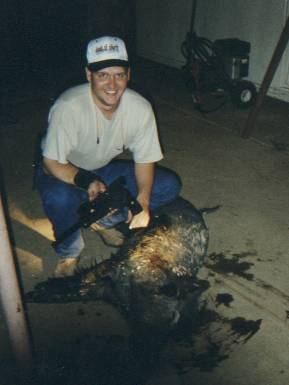
Take a mature White-tailed buck… the trophy we all dream about getting some day. In the state of Texas, depending on habitat, food, and population, he’ll probably weigh somewhere between 150 to 200 pounds. The vitals are located right in the middle of the chest cavity, behind the shoulder. Accompany that with thin skin along with a light skeletal structure, and bless his heart, the old White-tailed deer isn’t all that hard to kill. Given it’s a well placed shot from an adequate gun or bow.
On the other end of the scale, there’s the wild boar. Depending mostly on food and population, he will weigh somewhere between 150 pounds to over 400 pounds. The vitals of this animal are located forward in the chest cavity, in relation to a white-tailed deer, where they are very well protected. His skeletal structure is heavy. In fact, as if the shoulder blade itself wasn’t enough there is even more to protect them. The skin is much tougher than a deer’s and the hair is thick and coarse. More times than not there is a layer of hard dry mud caked on the skin form wallowing. A cartilage like plate covers the chest and back. This plate in some cases can be more than two inches thick and is very hard. With all of this added up its around 4 to 6 inches of bone, plate, skin, and mud. Pound for pound hogs have more blood than deer. This explains why the have so much endurance after being hit even with well placed shots. Put all these things together and it’s enough to make you have nightmares. The best kill shot is the head or neck. Placing a bullet somewhere between the eye and the ear will take out the brain and put any hog, no matter how big, down for the count. This sounds good but as we all know you don’t always get a perfect head or neck shot under hunting conditions. The next best is of course the chest, the best-protected place on a hog. I like to put a bullet right thru both shoulders breaking them and getting the heart and lungs. If I can’t get both shoulders I try to place the shot to angle through the chest to take out the vitals and break the off side shoulder. Getting a bullet or arrow through all of the protection Mother Nature has provided the wild hog with is no small task. She did her homework on the cartilage shell. Not only is it thick and hard. It’s resilient and will close up quick on small wounds causing blood trails to dry up; this is why a large exit wound is so important. The size of a hog we are discussing here may or may not be killed instantly with a body shot, if not, a good blood trail makes the difference in whether he will be found or not. Entrance holes aren’t very big whether from a firearm or a bow. An exit wound created by a quality bullet that mushroomed properly will create a large blood channel with substantial blood loss very quickly. If a bullet doesn’t exit it didn’t do its job! Looking back the main mistake I made was the use of load intended for White-tailed deer and other animals in that range. Being placed into the on-side shoulder didn’t help matters either.
If you are like I am, you can’t just run out and buy a brand new gun or bow just to hunt hogs. Although its sounds like a good enough excuse to me. The guns we use to hunt deer are adequate for hogs even the large ones with one simple change, the bullet. Think heavy, and in a handgun thing really heavy. For example in my 30-06 I went to a 165-grain Sierra Boat-tailed Pointed Soft Point instead of the 150-grain Nosler Ballistic Tip, a very adequate bullet for White-tailed deer. Since this change I have had good luck on deer and hogs. When Nosler changed the Ballistic Tip to perform more like a soft point I tried the 180-grain in my 300 Winchester magnum and could not be happier. This combination has sent more of the big porkers to the happing rooting grounds than I care to remember cleaning. Like I said in a handgun think big and heavy. The 44 Remington magnum or the 45 Colt (in a strong gun with a heavy load) are excellent choices. I use a 300 Uni-core from Speer or an XTP from Hornady in that same weight in my guns and performance is superb. When using bullets like the Uni-core, that do not expand, you want to hit bone preferably both shoulders. The new Nosler partition HG 45 caliber bullets in 260 and 300-grain look to be winners for the 454 Casull. I’ve always enjoyed hunting with single-shot handguns and hogs are a top prey. The 45-70 Government or 375 Winchester are good choices in a Thompson/Center Contender (now referred to as the G2) or Encore.
The 350-grain Hornady flat-point is my pick for the 45-70 whether I’m using a T/C Contender or my Marlin “Guide Gun”. In my 375 Winchester I used a 220-Barnes flat-point. The first wild hog I ever killed was with this combination and it leveled him. Not to say other combinations will not work. This is just what I’ve discovered works well for my particular guns and the hunting situations I’m likely to be in. The main thing is to get penetration and cut a large blood channel. Quality construction and heavy weight bullets are the best way to insure success. I’m not an archery hunter (yet) but I have several friends who are, and I’ve helped track hogs shot with a bow. My opinion for archery hunting is to use a fixed blade broad head. Mechanical broad heads cut huge blood channels and exit wounds on deer. The problem is the large blades can deform or hang up on entrance if this happens odds are the arrow will not have enough momentum to exit. I helped track what was probably a 275-pound boar a friend of mine shot in the 1999-2000 hunting season. He was using a mechanical broad head and the arrow didn’t exit. We found the arrow but not the hog. The broad head looked like it had been put though a meat grinder. I’ve heard similar stories since then. The fixed blade broad-heads on the tip of a thick walled arrow seems to work the best.
By using the changes I listed above, I have had equal success on deer as well as hogs. I know when the next time a big tusker steps in front of me I’ll be ready. It’s a good feeling, as a hunter, to have confidence in your equipment when you head to the field. There is no worse feeling than wounding and loosing any game, but there is no better feeling than a good clean humane kill. Whether it’s a trophy or just to fill your freezer.
